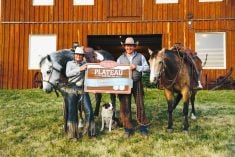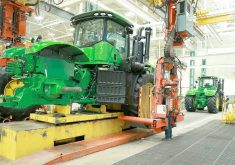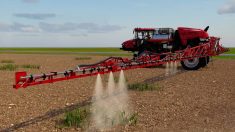The ABP, on behalf of the 25,000 cow-calf producers in Alberta, believes the drought and poor weather conditions during 2009 should become part of the AgriRecovery initiative.
Alberta’s beef cow-calf sector was faced with a considerable level of difficulty during the summer and fall of 2009. Relatively low moisture levels and cool weather conditions compared with other years have been responsible for poor pasture growth and forage production necessary for beef cow supplemental summer, fall and winter feeding. Producers have had to bring in supplemental feed or ship cow herds to pasture in better-producing regions, creating additional production costs. As well, because many pastures were depleted during 2009 they will have to be managed during the following spring by allowing a resting period by holding back cow herd exposure. This will require additional supplemental feeding and costs.
Read Also

Guarding against misinformation: Do you believe in house hippos?
Misinformation and disinformation run rampant in today’s digital age. Farmers must be wary of the digital dangers and know how to keep themselves safe.
The Alberta Beef Producers (ABP) Cow Calf council did a study and prepared a report to assess the financial level of hurt the Alberta cow-calf sector is facing. This was done as support for application to the Alberta provincial government and to the federal government for the AgriRecovery Program.
A comparison of accumulated precipitation from September 1 to August 31, 2009 shows record-dry, extremely low and very low precipitation was recorded in the Central, North East and Peace Regions of Alberta. Very low and low precipitation was recorded throughout the province except the South where conditions were near normal.
In the assessment, beef cow numbers were identified for each county in the province. Droughtaffected counties during the summer of 2009 were identified by Agriculture Canada in support of tax deferrals for producers. In July 2009 there were close to 1,790,000 beef cows in Alberta. Approximately 1,332,000 cows or 74 per cent of the Alberta beef cow herd was classified being in a drought region; 26 per cent of the herd was classified as being in a non-drought region.
Part of the ABP assessment included a review and pricing of typical feeds including hay, green-feed and straw during 2008 compared with 2009. These all increased in price by almost two times and any feed that had to be brought in included the cost of trucking.
There are several programs available through AFSC such as forage and pasture insurance to assist producers in their risk management endeavours. Some of these programs would have assisted some producers, at least in part, during the 2009 drought. The proceeds of these could have been used to offset some of the financial drain for feed purchases in 2009 and into 2010. But the study indicated that this support was far from enough for the cow-calf sector. The effect of livestock support program contributions available to producers is presently being assessed.
RAPID RESPONSE PROVISION
AgriRecovery is one of the programs in the risk management portfolio that provides a process to enable governments to respond quickly when a natural disaster hits. The program is designed to provide a rapid financial response to assist with immediate recovery from a disaster situation. It’s also there to enable short-term actions to minimize or contain the impacts of the disaster on producers. At the same time AgriRecovery is not intended to replace the need for multi-year strategies required to assist industries to adjust to the long term realities of a disaster.
Now where does the financial support for this Program come from? AgriRecovery is cost-shared on a 60:40 federal:provincial government basis. To initiate the process the provincial minister needs to put in a formal application to the federal minister of agriculture for support. In the case of large natural disasters, governments need to assess the cost-sharing arrangement on a case-by-case basis. Large natural disasters such as the drought and adverse weather situation could be rather expensive to governments. Some producers are being forced out of business because of increasing feed costs. In some situations producers are liquidating some or all of their cow herds because they cannot continue to support their operations.
The ABP, on behalf of the 25,000 cow-calf producers in Alberta, believes the drought and poor weather conditions during 2009 should become part of the AgriRecovery initiative. ABP is working closely with Alberta Agriculture to assess the cost of this disaster. As part of the initiative ABP has been communicating with producers in Manitoba and Saskatchewan as well.














